2023.08.02.85
Files > Volume 8 > Vol 8 No 2 2023
Mahmood Alkhulaifi1*
1 Iraq- Ministry of Agriculture / Agricultural Extension & Training office / Nineveh Centre for Agricultural Extension and Training,
* Correspondence: [email protected]
Available from: http://dx.doi.org/10.21931/RB/2023.08.02.85
ABSTRACT
Desertification worldwide has increased dramatically since the middle of the last century. This is also a dangerous threat to Iraq, primarily due to years of neglecting this issue. The areas affected by desertification vary from one country to another in the Arab region, which is about (40) million hectares in Iraq. The problem has mainly spread in Iraq due to military operations that have destroyed soil quality since 1980. This has led to other serious consequences: turning productive land into barren land, increased dunes, and increased pressure on groundwater to threaten food and water security. This study will discuss options to address the desertification problem in Iraq for now and how this will progress in 5 years. It will first identify the key issues of desertification in Iraq before evaluating the current and future problem environment. It will also provide potential solutions and a problem cluster now and in 5 years. It is essential to discuss how these will progress into the future, especially in Iraq's unstable political environment with an ongoing war. It will suggest some viable options for the country when political stability is achieved and outline how evaluation criteria can be applied to the possible solutions.
Keywords: Desertification; Management; Iraq
INTRODUCTION
Desertification worldwide has increased dramatically since the middle of the last century. Losing more than 40 % of the planet's land is degenerate, affecting half of humanity directly and threatening nearly half of the global GDP (US$44 trillion)1. According to United Nations reports, by 2050, the rate of land degradation is expected to reach 16 million square kilometers. This is also a dangerous threat to Iraq, mainly due to years of neglecting this issue. The areas affected by desertification vary from one country to another in the Arab region, as this area amounts to about (31) million hectares in Yemen, about (40) million hectares in Iraq, (93) million hectares in Sudan and (14) million hectares in Algeria2.The problem has spread in Iraq due to military operations that have destroyed soil quality erosion since 19803,4,5; This has led to other serious consequences: a turning of productive land to barred land, increased dunes and their adverse effects, declining forms of biota, increased air pollution and sand movement, increased pressure on groundwater, threats on food, drought and water security6,7. This study discusses options to address the desertification problem in Iraq for now and how this will progress in 5 years. It will first identify the critical issues of desertification in Iraq before evaluating the current and future problem environment. It will also provide potential solutions and a problem cluster now and in 5 years. It is essential to discuss how these will progress into the future, especially in Iraq's unstable political environment with an ongoing war. It will suggest some viable options for the country when political stability is achieved and outline how evaluation criteria can be applied to the possible solutions.
Background of desertification in Iraq
The problem of desertification in Iraq began in 1970, and the major contributors include war, political stability, water scarcity, land clearing and degradation and climate change8,9. Desertification affected "69 % of Iraq's agricultural lands," according to Sarmad Kamel, the Director of the Planning Department in the Directorate of Combating Agricultural Desertification9,10. Between 1970 and 2010, projected planted lands reduced from 12.2% to 8.3% of Iraq's total area11.
War
Military operations, in particular, have caused significant damage, with heavy machinery breaking down surface soil and damaging desert vegetation. This increases the amount of minute suspended in the air, which impedes plant growth12, 13. The use of weapons by US forces in Kuwait and Iraq has spread toxic materials, and the burning of oil wells has also destroyed land through black and acid rain14. Not only did the activities and the severe economic embargo spread toxic material, the destruction of palm trees during the Iraq-Iran war (the 1980s) and destroyed soil, but unprecedented sandstorms across the country contributed to desertification 15,16.
Political instability
Due to years of war, the unstable government in Iraq continues to suffer and struggle for stability after the US occupation8. The conflict between Iran and Iraq also prevented the Ministries of Agriculture and Irrigation activities for land conservation and development due to directing those two ministries' capabilities to support that war from the former regime. The unjust siege in the nineties of the last century and the occupation of most areas by ISIS (2014-2017) in Iraq led to the reluctance of many projects related to combating desertification17.
Water scarcity
Desertification has largely been impacted by water scarcity, and the most significant areas affected are in the south, center and west of Iraq18. There are several reasons for Iraq's problem with water scarcity. Firstly, despite the lack of research available on the impact of climate change in Iraq, water supplies in Jordan, Syria and Egypt have been affected by an increase in average temperatures 19,20,21. Secondly, most of Iraq's water resource comes from neighboring countries such as Iran, Turkey and Syria 22, 23. Also, Iraq's water supply decreased by 98%, whereas the Tigris and Euphrates decreased by 30% in the 1980s and is expected to drop to 50% by 203024. An increase in the demand for water and the construction of dams in these countries has resulted in a diminishing supply reaching Iraq. In addition to the large depressions in Lake Hamrin, the Iraqi Marshes, Dukan Lake, and Darbandikhan Lake25.
Furthermore, the operation of hydroelectric power stations on its dams, and for this effect, this decrease may be important for generating energy used to support electricity needs26. Since the 1960s, dams have been built in Syria (Bath and Tabqa dams) and Turkey (Karakaya, Keban and Ataturk dams. Thirdly is the ineffective management of water resources. Political instability and lack of knowledge, especially on barriers, have had a detrimental impact on Iraq's water resources management. In the 1970s, the canal Thartar was built for flood controls, and in 1985, the Haditha Dam was constructed to produce electricity; however, these dames have not saved sufficient water to meet the country's demands28.
In addition, the difficulties imposed by the drought led many farmers to lose their work and leave their lands. Three thousand three hundred fifty-eight families were displaced due to climatic effects that led to desertification29,30. Moreover, it ignited many social conflicts due to drought in the center and south (Planetary Security Initiative, 2020). The decrease in rainfall caused the returnees to their lands in Nineveh Governorate after ISIS displaced them to migrate again. The Iraqi president has sounded the alarm about climate change and water scarcity. Therefore, Iraq's existence is threatened, leading to the threat of 40 % of the area of Iraq to desertification32.
Climate change
Desertification has been affected by high average temperatures and lack of rain33,34. The annual rainfall is less than 100mm in more than 72% of Iraq's area, causing severe movements in dunes leading to more excellent desert land35,36. The lack of rainfall for the 2020-2021 season is the second driest in the past 40 years, which caused a decrease in water flow in the Tigris and Euphrates by 29% and 73%, respectively. Salinity has been another threat to land and the flows of the water of Tigris and Euphrates 38. A lack of awareness by farmers and insufficient drainage39,40 has caused this. Iraq is affected by drought, climate change and desertification, which in turn leads to soil erosion and a decrease in the productivity of a dunum41,42. The loss of one centimeter of the surface layer of the soil leads to a reduction in the yield of crops by more than 2%. This soil erosion is due to weather factors and the failure to use sustainable methods to preserve soils from erosion43.
Human activity
This relates to the misuse of natural resources and erroneous practices by humans, including land clearing44. This has become a concern after 2003 due to war and the lack of strong laws and enforcement. An increase in urban population from 35% in 1950 to 75% in 1995 in particular, and the Iraqi president indicated that the people of Iraq in 2022 will rise from forty-one million to fifty-two million after ten years, has led to the clearing of forests to meet the demand of overpopulated cities and lack of vertical housing. There is no central plan for implementing housing projects, leading to the encroachment of cities horizontally and the abuse of arable land.
Evaluation of the current management environment
The management of the Directorate of Combating Agricultural Desertification (DCAD) in Iraq now includes 3 central departments: the technical section( Department of Planning, Department of Investment of Western Sahara (Iraq), Department of rangeland management, Department of Water wells), the administrative section and the department of the project that some small department in states primarily in the southwest of Iraq (Draft desert oases Draft dunes (Dhi Qar and Biji), Draft development of natural vegetation, Draft drilling water wells, Hammad Basin Development Project).
Current actions
The Directorate of Combating Agricultural Desertification (DCAD) is one of the Ministry of Agriculture formations that has fought against desertification due to its threat to food security and long-term environmental damage. Some activities by the DCAD and its state departments were undertaken before the war in 2003 and have now slowed down or ceased. The projects are outlined as follows:
The dune stabilization project
Desertification is devouring, along with salinization, about 200,000 dunums of arable land annually in the current situation for two reasons: the first is the scarcity of water from its sources outside the borders and poorly quality infrastructure in the water sector 46 and the second is the weakness of sustainable plans to combat desertification and build green areas which depend on irrigation and traditional practice in agriculture 47,48. It extends from the Diwaniyah desert in central and southern Iraq and the Al-Baaj deserts in northwest Iraq9,49.To address these shifts, some sand dunes have been installed in Dhi Qar and Baiji. Table 1 shows these activities in 2005-2006, further outlined below.
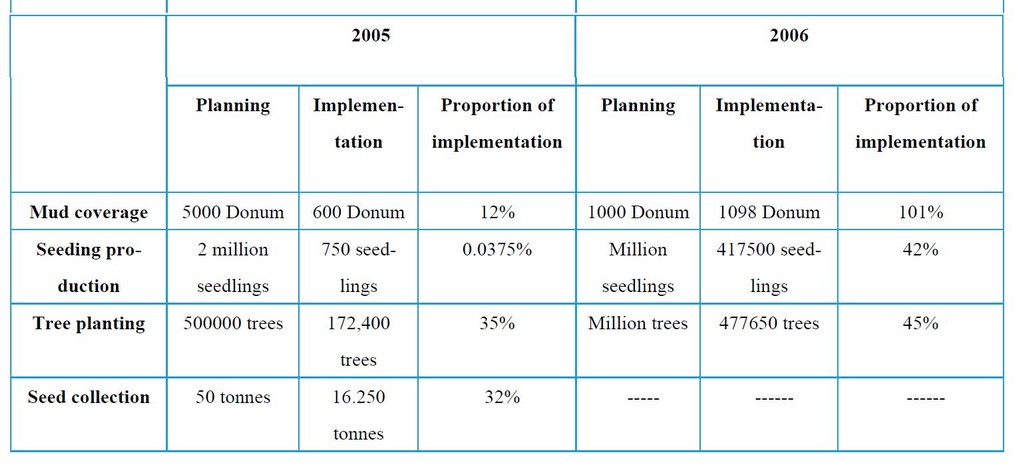
Table 1. Dune protection in Dhi Qar and Baiji
Mechanical methods (mud coverage)
The sand dune is covered with a layer of heavy soil about 15 to 20cm in thickness. After rainfall, it helps prevent movement of the sand and gives the opportunity to plant seeds for natural growth.
Biological methods
This occurs after the coverage of the mud, where trees and shrubs that are tolerant of salinity and drought are planted in the form of green belts and windbreaks.
Dry Farming
The sands of the central region (state of Salah al-Din and Baiji have the ability to retain moisture. To take advantage of the humidity, the plan (humid farming) has long roots and is planted at a soil depth suitable for after being soaked in water for 24 hours.
Production of seedlings
Seedling production of oasis and desert plants tolerant to drought and salinity is needed to install sand dunes.
Project desert oases
Creating oases in the desert in the west of Iraq to encourage investment in the desert, relying on groundwater to provide water for sheep farmers and planting natural vegetation to enhance the environment. Table 2 shows these activities.

Table 2. The Desert Oases project
Hammad Basin Development Project
Basin in Hammad, located in western Iraq, is part of a joint venture with neighboring countries (Saudi Arabia, Jordan, and Syria) and extends over 32,500 km 2, about 13 million acres. This is equivalent to about 7.4% of the area of the country. The main beneficiaries of this project are the nomadic people, and pastoral plants are considered the most essential sources in the provision of food for animals. The region, in recent years, has been affected by overgrazing and degradation by human and animal activity.
Establishment of model farms
These farms grow with crops that are resistant to salinity and drought. This project aimed to create farms that use sprinkler irrigation to grow plants in appropriate environmental conditions, such as palm, olive and other trees in the states of Anbar, Najaf, and Karbala.

Table 3. Development project of vegetation (natural pasture)
Project drilling water wells
This project involved drilling wells to provide water for modern irrigation technologies in Kirkuk, Nineveh, Salahuddin, and Anbar. This project ceased after 2003 because of the deteriorating security situation and damage to big rigs. Table 4 illustrates the number of water wells completed in Nineveh.
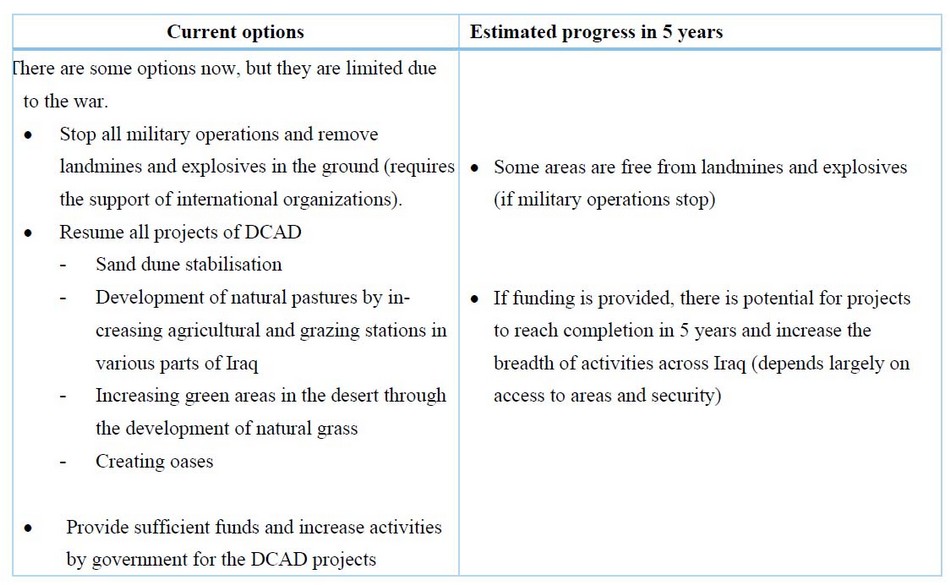
Table 4. Project drilling water wells in Nineveh
Prediction of management environment in the future
If the war continues (now with ISIS) and political instability remains, developing the (DCAD) will be difficult. However, if the conflict is resolved, the management environment in the future should improve and open more projects in all areas, particularly in the southwest states. The DCAD's management in the future includes the technical section( Department of Planning, Department of Investment of Western Sahara (Iraq), Department of Rangeland Management, Department of Water wells), the administrative section and the Department of Project that some small departments in states primarily in the southwest of Iraq (Draft desert oases(Anbar, Najaf, Karbala, and Muthana) Draft dunes (Dhi Qar, Anbar, Najaf, Karbala, and Muthana and Biji), Draft development of natural vegetation(in all states of the southwest of Iraq), Draft drilling water wells(Nineveh, Kirkuk, Anbar), Hammad Basin Development Project)
If the current status of the situation continues into five years later, it will get worse. Much of Iraqi land and environment is likely to become desert by 2020, putting Iraq's food and water security at significant risk. However, suppose the war resolves and a more stable political environment is achieved. In that case, there is potential to treat this problem with specialists and experts in the field of desertification and apply modern technology to address this problem. Additionally, the enforcement of strict laws to stop the logging and removal of vegetation for various purposes, including residential and agricultural purposes and, particularly, for growing wheat and barley in western Iraq because these crops only depend on rain for irrigation. Preventing overgrazing by the owners of the animals is another factor that has affected the land severely.
It is also essential to address water to combat desertification in Iraq and water and food security in the future. There are two possible solutions to this problem. Firstly, the government should implement sustainable management plans and focus attention on the Tigris River because it has several tributaries in the mountains of Iraq 50. Building dams in this area can provide water catchment in spring and summer when the snow melts from the north of the Iraq Mountains. Also, the government should focus on improving resources from the Tigris River as it directly enters Iraq, which differs from the Euphrates that entered Syria before Iraq50. The government should also build a strong relationship with neighboring countries, especially Turkey, to improve access to the Tigris and the Euphrates. Although the government can improve water management through better use of technology, such as adopting modern irrigation techniques, improving the successful water management practice would be much more effective in the long-term water supply 50 .
Problem clusters
The current situation
The problem of desertification in Iraq can be further investigated according to its clusters, shown in Figure 1. All collections have played a significant role in the worsening of desertification; however, Iraq's ongoing war, political stability, and water scarcity are considered the most critical factors that have heavily contributed to this problem.
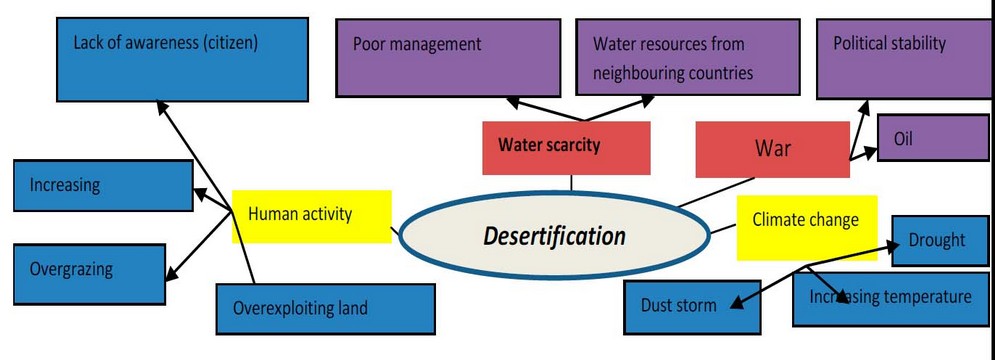
Figure 1. The major problem clusters contributing to desertification now
The future situation
If the war and political environment continues, the problem will grow. The priority is security for people, but if the political situation improves, the future of desertification in Iraq can be determined according to its clusters in Figure 2.
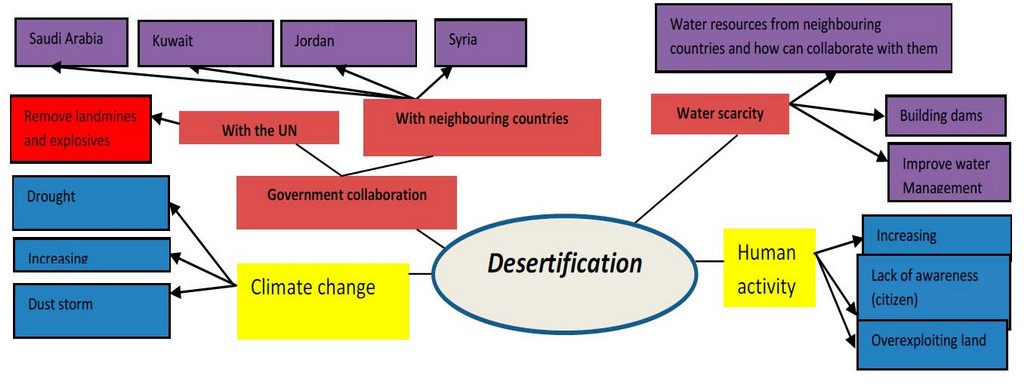
Figure 2. The major problem clusters contributing to desertification in 5 year
Current options to alleviate desertification and their progress in the next 5 years
After 2003, many businesses and infrastructure has been affected by military operations and the security situation faced in Iraq. This has also led to the termination of environmental projects, including plans to address desertification. If the war continues, the problem is likely to increase, but Iraq has options if the war resolves. Figure 3 shows how the desert is expanding in Iraq. Iraq is located between six countries, and the government needs to build strong relationships with these countries, especially with Turkey, Syria and Iran, which holds many of Iraq's water sources. The Tigris River is a precious resource that can be utilized with careful water management and the construction of dams.
Additionally, the desert in western and southern Iraq extends into neighboring countries (Syria, Jordan, Saudi Arabia and Kuwait) and will, therefore, need cooperation to address the problem. Table 5 shows options for addressing the issue of desertification now and in the next 5 years. This shows how the southwest of Iraq is at most significant risk of desertification. It is predicted that if the current spread of the desert continues.
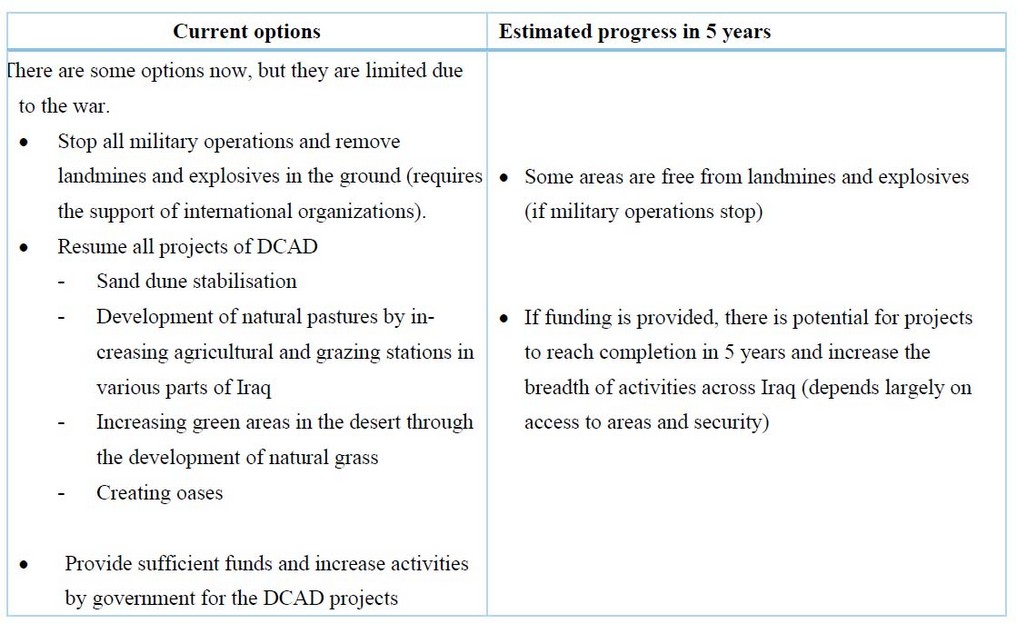
Table 5. Options to address desertification and their progress in the next 5 years
Future options and the best time for a problem resolution
The ideal time to act on Iraq's desertification problem is when the war concludes, and political stability is achieved. However, Iraq is at risk of a significant environmental disaster due to neglect of the environment and attempts to turn Iraq into a country of consumers. In the near future, options must be made to accommodate the unpredictable political situation. Table 6 shows future opportunities with a more excellent guarantee of success.
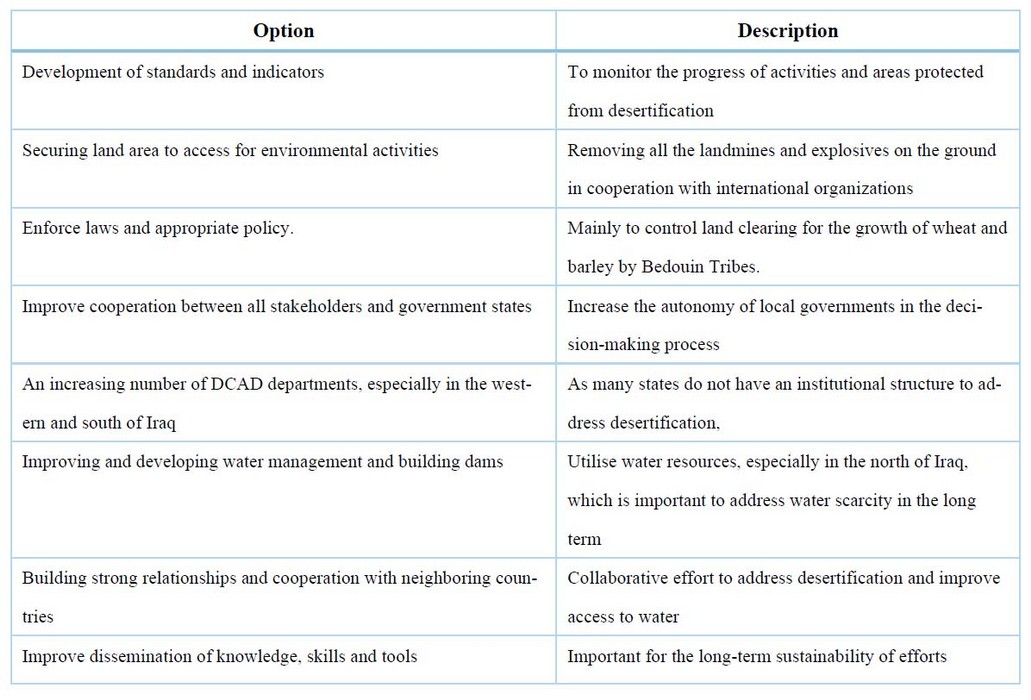
Table 6. Future options (ideally after the war)
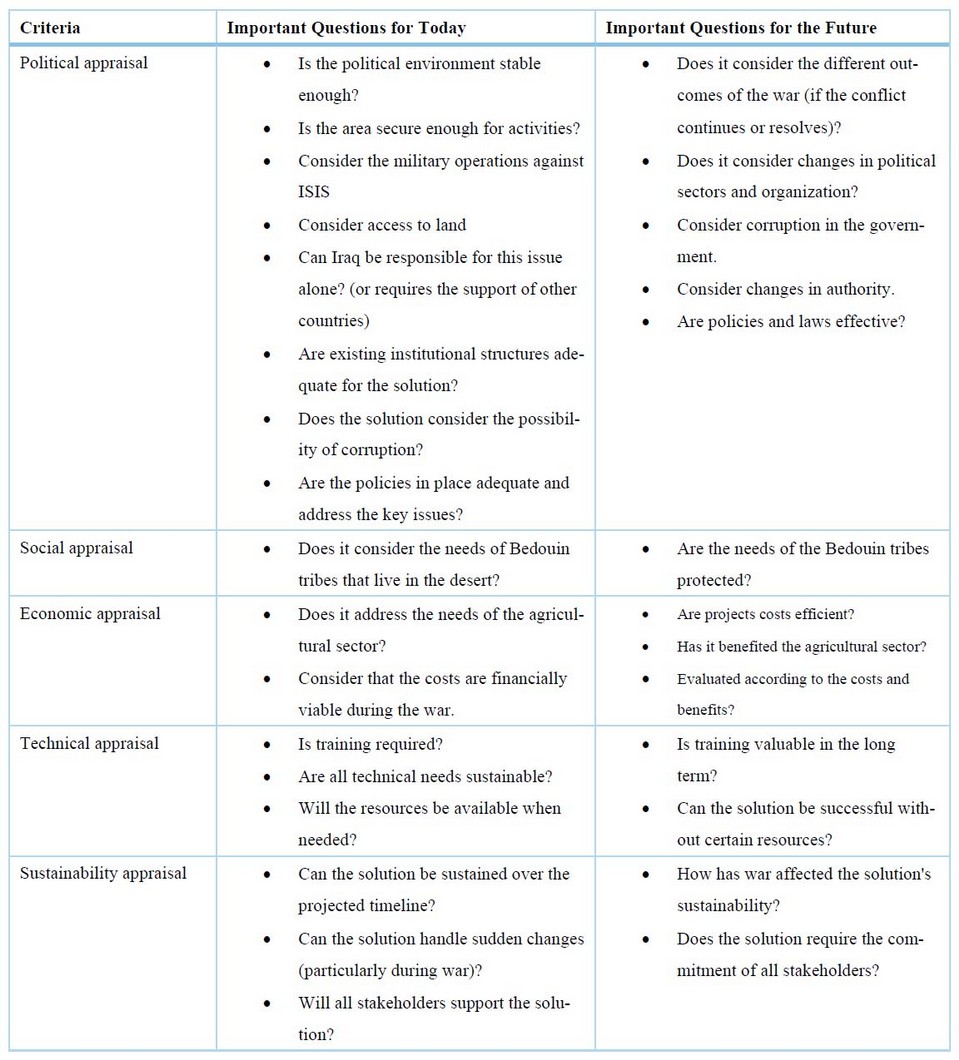
Table 7. Criteria for selecting solutions to desertification in Iraq
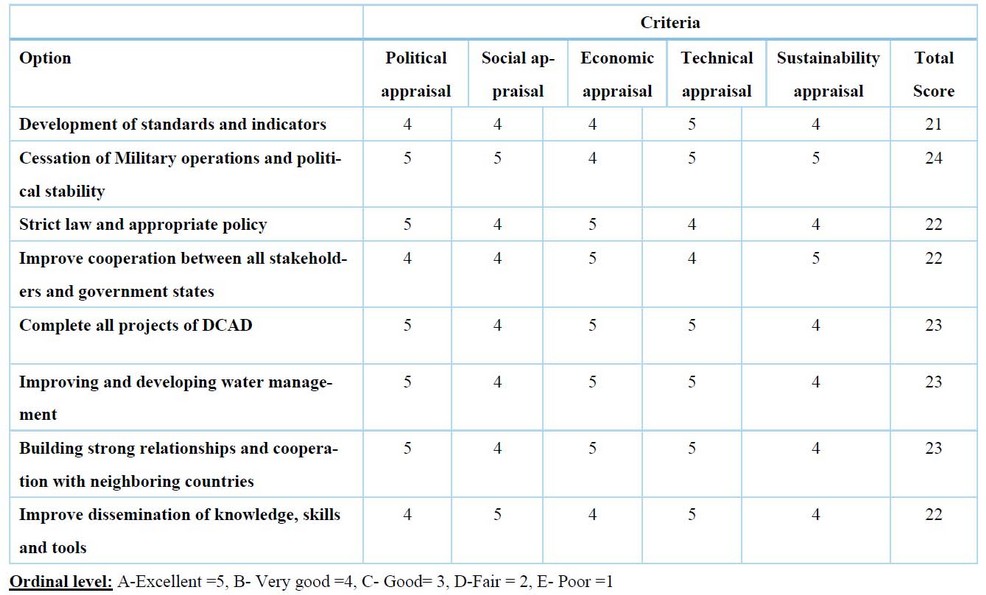
Table 8. Option evaluation at the operational level now
Table 9 shows the actions to combat desertification if the war stops. Removing all the landmines and explosives in the ground with the support of international organizations is the most essential action. Many states have no plans to combat desertification, so it is necessary to increase the number of state departments, particularly in the southwest of Iraq. This is followed by building solid relationships with neighboring countries to manage desertification and water scarcity through joint projects to build dams and improve water management. Also, there needs to be better policies on land and water use and enforcement of laws. The government also needs to be restructured so the local governments can decentralize power to monitor the progress and evaluate the success of these actions.
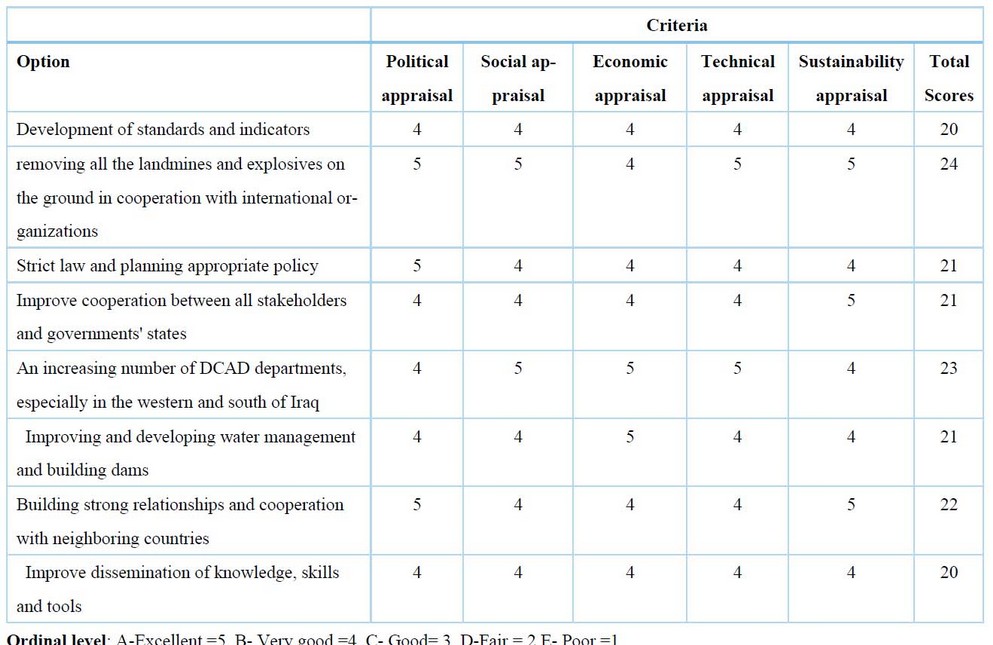
Table 9. Option evaluation at the operational level if the war stops
CONCLUSION
Desertification in Iraq has become a severe threat, especially to arable land and food and water security. The country has attempted to address this issue, particularly with the initiation of the DCAD desertification projects, but the wars in Iraq and political instability have hindered further development. This report has examined the problem according to its environment and clusters, discussed how the current options will progress, and suggested other options for the future. Overall, solutions need to cope with the economic, institutional and technical resources available and the unpredictable political situation.
REFERENCES
1. UN. Chronic land degradation: UN offers stark warnings and practical remedies in Global Land Outlook 2. 2022; https://www.unccd.int/news-stories/press-releases/chronic-land-degradation-un-offers-stark-warnings-and-practical \
2. Arab Organization for Agricultural Development (AOAD) / League of Arab States -Arab Food Security Situation 2019; ISSN 1811-5020 http://aoad.org/Arab_food_Security_Report_2019.pdf
3. Republic of Iraq: Ministry of Agriculture. (2017). Land Degradation Neutrality Target Setting National Report.
4. UNEP. (2020). Iraq launches National Adaptation Plan process for climate change resilience.
5. Haktanir, K.; KARACA, A.; OMAR, S. The Prospects of the Impact of Desertification on Turkey, Lebanon, Syria and Iraq. Environmental challenges in the Mediterranean. 2004; 2000-2050, 37, 139.
6. UNEP. (2020). Iraq launches National Adaptation Plan process for climate change resilience.
7. NRC. (2021a). Water crisis and drought threaten more than 12 million in Syria and Iraq.
8. NRC. (2021b). Iraq's drought crisis and the damaging effects on communities.
9. Zidane Jabbar. Desertification threatens millions of Iraqis in the absence of any water plans.2021; https://www.independentarabia.com/node/277331
10. Alhurra. An environmental disaster. 70 percent of agricultural land deserted July 8, 2021; https://www.alhurra.com/iraq/2021/07/08/
11. Al-Saidi, A., & Al-Jumaiali, S. (2013). The economic costs and consequences of desertification in Iraq. Global Journal of Political Science and Administration, 1(1), 40-45.
12. Ahewar. https://www.ahewar.org/debat/show.art.asp?aid=6902252020 .2020;
13. Qureshi, S. A., Ahmad, W., & Al-Falahi, A. A. (2013). Optimum groundwater table depth and irrigation schedules for controlling soil salinity in central Iraq. Irrig. and Drain., 62(4), 414-424.
14. Sobh N. Oil well fires. A combat crisis still haunting Kuwait 2022; https://attaqa.net
15. ICRC(InternationalCommittee of the Red Cross). (2021, July 19). Iraq's perfect storm- a climate and environmental crisis amid the scars of war.
16. CAPITAL. (2020, September 10). Iraqi agriculture sector overview.
17. Ramadan M. Iraq faces an environmental disaster. Cities without green belts and agriculture await funding2021; https://www.rudawarabia.net/arabic/business /23052021
18. WWF. (2021). Country profiles
19. Gleick, P. H. Water and conflict: Fresh water resources and international security. International security, 1993; 18, 79-112.
20. Foreign Policy. (2021). The Middle East Is Becoming Literally Uninhabitable.
21. NRDC. (2021). The Natural Resources Defense Council Global warming 101.
22. Lorenz, F. M. Strategic Water for Iraq: The Need for Planning and Action. Am. U. Int'l L. Rev. 2008; 24, 275.
23. F. Aamer. (2021). Joint Working Group on International and EU Water Diplomacy – In Focus: The Euphrates–Tigris River Basin. The Stimson Center. https://www.stimson.org/2021/joint-working-group-on-international-and-eu-water-diplomacy-in-focus-the-euphrates-tigris-river-basin/
24. Von Lossow, T. (2018). More than infrastructures: water challenges in Iraq. Clingendael.
25. PAX. (2021). Iraq's waning water resources in 2021
26. Pilesjo, P., & Al-Juboori, S. S. (2016). Modeling the effects of climate change on hydroelectric power in Dokan, Iraq. International Journal of Energy and Power Engineering, 5 (1-2), 7-12. doi:10.11648/j.ijepe.s.2016050201.12
27. A. Ershad. (2018). No water or electricity: why southern Iraqis are at breaking point. France 24/The Observers. https://observers.france24.com/en/20180724-water-electricity-iraq- south-Basra; and M. Salim and L. Sly. (2018). Widespread unrest erupts in southern Iraq amid acute shortages of water and electricity. The Washington Post.https://www.washingtonpost.com/world/widespread-unrest-erupts-in-southern-iraq-amid-acute-shortages-of-water-electricity/2018/07/14/b9077b90-86c2-11e8-9e06- 4db52ac42e05_story.html
28. Korkutan. S. The Sources of Conflict in the Euphrates-Tigris Basin and Its Strategic Consequences in the Middle East. 2001; DTIC Document.
29. IOM. (2022). Climate-induced Displacement – Central and southern
30. FAO, CGIAR, CARE. (2021). Deploying a humanitarian–development–peace next approach: Exploring, strengthening and reviving dryland ecosystems. Forestry Discussion Paper. https://www.fao.org/3/cb6917en/cb6917en.pdf
31. IOM. (2021). Climate-Induced displacement – Ninewa.
32. Skynewsarabia 2022. https://www.youtube.com/watch?v=WsLodyfujhk 28/ 04/ 2022:
33. Al-Maathedy, M. H., Mohammed, Th. T. & Al-Asha'ab, M. H. The effect of vitamin E supplementation and different levels of dried tomato pomace on common carp diets (cyprinus carpio l.) on productive performance. Biochemical and Cellular Archives. 2020, 20(2): 5371-5377.
34. Alkhateeb, A. R. .; Ibrahim, W. .; Taha, A. A. . Correlation Between Udder Conformation With Daily Milk Yield Of Buffaloes. JLSAR 2021, 2, 61–65.
35. Hameed, M., Ahmadalipour, A., & Moradkhani, H. (2018). Apprehensive drought characteristics over Iraq: Results of a multidecadal spatiotemporal assessment. Geosciences, 8(2), 58.
36. EL-Hassan, I. M. Desertification monitoring using remote sensing technology. 2004;
37. UNICEF. (2021, August 29). Running Dry: Water scarcity threatens lives and development in Iraq.
38. ICARDA. (2013). Managing Salinity in Iraq's Agriculture: Current State, Causes, and Impacts
39. Geotimes. (2004). Mesopotamian climate change.
40. Save The Children, 2021. Drought Summary Report, Diyala Governorate, Sci, June 2021.(internal document).
41. Qureshi, S. A., & Al-Falahi, A. A. (2015). Extent, characterization and causes of soil salinity in central and southern Iraq and possible reclamation strategies. Int. Journal of Engineering Research and Applications, 5(1), 84-94
42. Y. Hamid. (2020). Mitigating Conflict over Water in the Euphrates-Tigris Basin. Arab Center Washington DC. https://arabcenterdc.org/resource/mitigating-conflict-over-water-in-the-euphrates-tigris-basin/
43. Sahib, A. A.; Hussein, K. O.; Hameed, D. M. .; Salih, E.; Kareem, H. . Diffuse Anxiety Syndrome In Those With Stomach Ulcers In Samawa City's. JLSAR 2022, 3, 6-11
44. Rawabet Center. (2022). Water security in Iraq is in danger, And the Kurdistan Region is building dams.
45. A.H. Elaiwi, K. Hasan and M. Al-hadithi. (2020). Management of Natural Iraqi Water Resources, Aims and Challenges. IOP ConferencemSeries: Materials Science and Engineering 881 012181. https://iopscience.iop.org/article/10.1088/1757- 899X/881/1/012181/pdf
46. Chatham House. (2020). Same Old Politics Will Not Solve Iraq Water Crisis. https://www.chathamhouse.org/2020/04/same-old-politics-will-not-solve-iraq-water-crisis
47. UN Food and Agriculture Organization. FAO in Iraq: Iraq at a glance. https://www.fao.org/iraq/fao-in-iraq/iraq-at-a-glance/en/
48. FAO. (2021). Agricultural value chain study in Iraq: Dates, grapes, tomatoes and wheat. https://reliefweb.int/sites/reliefweb.int/files/resources/WFP-0000125470.pdf
49. AlSharqiya Live. (2022). Demonstration in Dhi Qar protesting the water scarcity. https://www.alsharqiya.com/en/news/demonstration-in-dhi-qar-protesting-the-water-scarcity
50. Al-Ansar, N., Adamo, N., Knutsson, S., Laue, J. Geopolitics of the Tigris and Euphrates Basins 2018; https://www.researchgate.net/publication/ 324680904 _Geopolitics_of_the_Tigris_and_Euphrates_Basins
Received: May 15, 2023/ Accepted: June 10, 2023 / Published: June 15, 2023
Citation: Alkhulaifi M . The future threat of desertification in Iraq . Revis Bionatura 2023;8 (2) 84. http://dx.doi.org/10.21931/RB/2023.08.02.84
